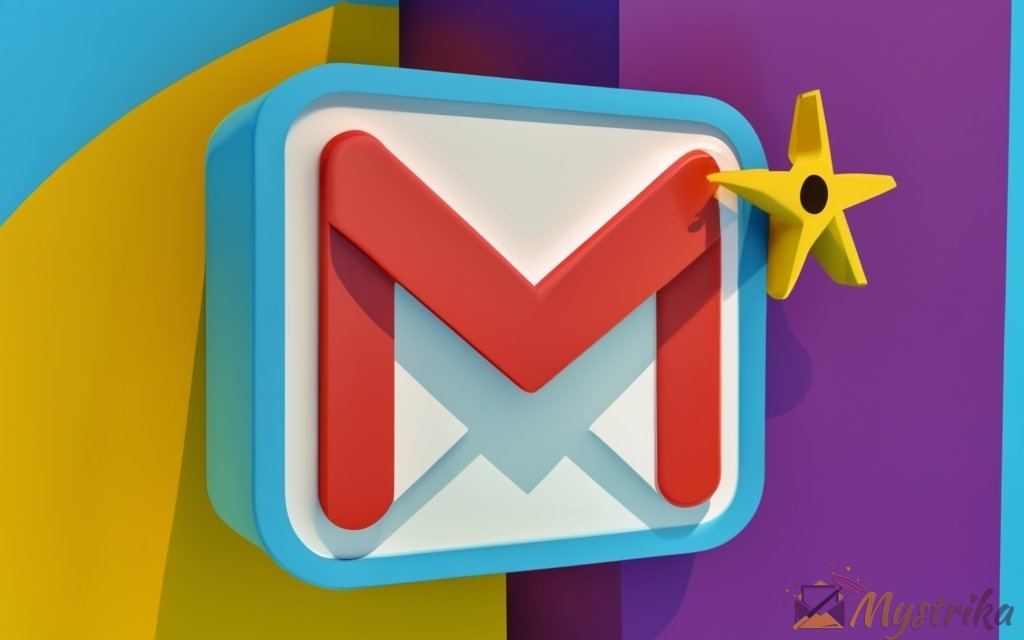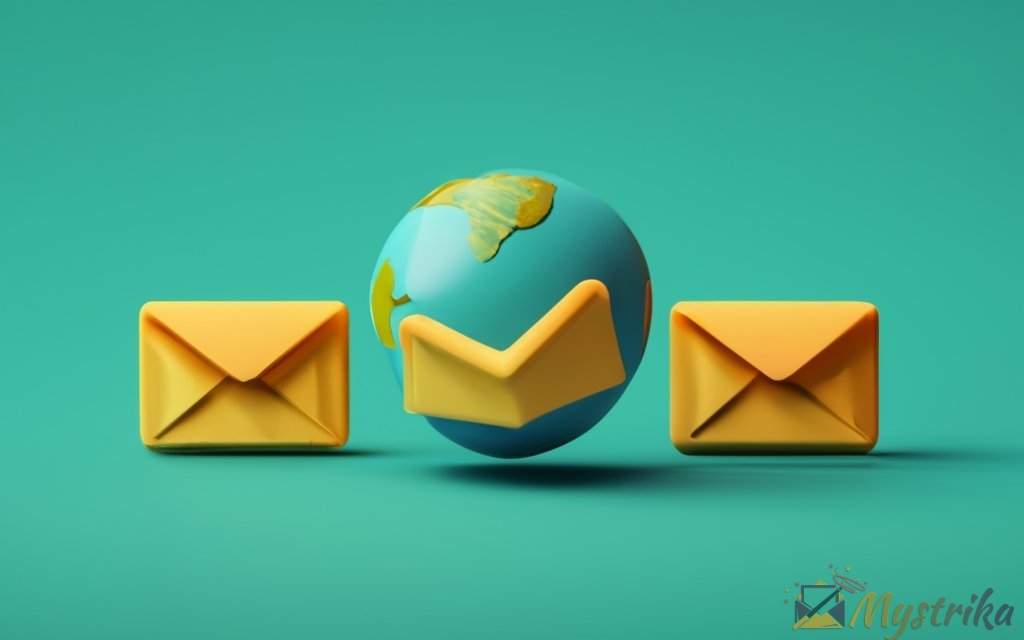Sending emails should be simple, right? Just open Gmail, type a message, and press send.
But if you’ve ever received strange errors or had your account suddenly suspended, you know that email can quickly become not-so-simple.
Gmail imposes daily sending limits and opaque recipient caps that trip up unsuspecting users.
Hitting these barriers kills productivity faster than you can say “550 5.3.4 daily limit exceeded.”
In this comprehensive guide, we’ll demystify Gmail’s confusing tangle of sending restrictions and limits once and for all.
You’ll learn:
- How daily sending limits work for Gmail vs Google Workspace.
- The truth about recipient limits and how emails are counted.
- Strategies for sending bulk email without exceeding quotas.
- Tools that provide visibility into account usage and limits.
- How to maximize deliverability within Gmail’s constraints.
Sending limits don’t have to be limiting. Arm yourself with knowledge, tools, and best practices to take control of Gmail deliverability.
An Overview of Gmail’s Sending Limits
Whether you use Gmail for personal emails or business outreach, you’ve likely encountered the dreaded “daily sending limit exceeded” error at some point. Nothing kills your email productivity like unexpected account restrictions.
To keep their servers running smoothly, Google imposes daily sending limits on both free Gmail accounts and paid Google Workspace plans. However, these limits aren’t always clearly explained or easy to track.
In this section, we’ll break down Gmail’s sending limits, how emails and recipients are counted, factors that influence your limits, and what happens when you go over the limit. Read on to finally make sense of Gmail’s sending restrictions once and for all!
Daily Sending Limits for Standard Gmail vs Google Workspace
The number of emails you can send per day depends on what type of Gmail account you have:
- Standard free Gmail accounts are limited to 500 emails per day. This is a rolling 24 hour limit, not a calendar day.
- Paid Google Workspace accounts can send up to 2,000 emails per day. Again, this daily limit resets after 24 hours, not at midnight.
Pretty straightforward so far. But here’s where things get a bit complicated…
Counting Emails Sent – Individual Recipients vs Group Emails
For limit purposes, Gmail counts each individual recipient, not just each email sent.
For example:
- Sending 1 email to 500 people would count as 500 emails against your daily limit.
- Sending 500 individual emails to a single recipient would count as just 500 emails.
This distinction matters most when sending group emails:
- If you send 1 group email to a Google Group with 500 members, it would count as 500 emails against your limit.
- Google Workspace users can add up to 2,000 recipients across the To/CC/BCC fields in a single email.
So bulk isn’t always better – small, targeted outreach may help you avoid hitting limits.
Factors That Can Affect Your Daily Sending Limit
While the published limits for Gmail and Google Workspace are clear, your actual daily sending capacity can fluctuate based on other factors like:
- Account age – New accounts often have lower limits until they build a sending reputation.
- Past sending activity – Accounts with consistent sending patterns tend to enjoy higher limits.
- Sender reputation – Suspicious activity like spam reports negatively impact your limits.
- Shared IP reputations – Other senders on your server IP can limit your capacity.
- Email content – Marketing outreach is given lower priority than transactional mail.
So even if your account should be able to send 2,000 emails per day, you may encounter lower real-world limits based on these variables.
What Happens When You Exceed the Limits?
Exceeding Gmail’s daily sending limits triggers two main types of restrictions:
1. Account suspension
If you send way more than your allotted capacity, Gmail may completely suspend your account’s ability to send any emails for up to 24 hours.
You’ll typically see this message if your account gets suspended:
"550 5.4.5 Daily sending quota exceeded. Your message could not be sent. suspend"This suspension only blocks new outgoing emails – you can still receive messages and access your account. But it’s very disruptive if you need to send urgent replies.
Suspensions reset after 24 hours if it’s a one-time offense. But repeatedly violating limits can get your account flagged for spam and cause permanent restrictions.
2. Error messages
If you just slightly exceed your limits, Gmail may allow emails to go through but return error messages like:
- “You reached a limit for sending mail”
- “550 5.3.4 Daily sending quota exceeded”
- “441 4.7.0 Daily sending quota exceeded”
These warnings indicate you’re close to getting suspended entirely, so take them seriously!
The only fix is to wait until your rolling limit resets. Error-prone accounts may also have their daily limits reduced as a precaution.
Next time you encounter sending restrictions in Gmail, hopefully you have a better grasp of why it’s happening and how to avoid it in the future. Carefully watching your recipient counts and patterns is key to staying below your account’s real-world capacity, however unpredictable it may be.

Understanding the Nuances of Gmail’s Recipient Limits
Daily sending limits are just one piece of the puzzle – Gmail also imposes caps on how many recipients you can include per message.
Juggling all these recipient limits can feel like playing email tetris, trying to fit as many addresses as possible without going over.
In this section, we’ll break down the less-known nuances around Gmail’s per-message recipient limits, external recipient limits, and rules around unique recipients.
BCC Limit – Max Recipients in To/CC/BCC Fields Per Message
The first recipient limit to understand is how many total addresses you can include in a single Gmail:
- For regular Gmail accounts, the limit is 100 recipients per message.
- For Google Workspace accounts, it’s 2,000 total recipients across the To, CC, and BCC fields.
This 2,000 recipient capacity only applies to messages sent through the Gmail interface. The limits are lower if sending via SMTP or APIs.
Some key notes on managing the 2,000 recipient limit:
- The 2,000 limit includes both internal and external recipients.
- You can use any combination of To, CC, and BCC as long as you don’t exceed 2,000 total.
- Putting recipients in BCC doesn’t exempt them from the limit.
- You’ll get an “exceeded recipient limit” error if you go over 2,000.
So if you need to email your 1,800 person company, using BCC won’t help – you’ll need to segment your list.
Max Recipients Allowed in a Google Group Email
What about when sending to Google Groups?
Groups make managing large recipient lists easier, but they come with their own limits:
- When sending to a Google Group, the entire group counts as just 1 recipient against your account limits.
- Each Google Group can contain up to 100 external email addresses.
- You can add up to 3,000 external addresses across all your Groups per day.
The key is that the 3,000 external address limit applies to the sum of all Group members, not individual messages.
So you could send a single email to 10 Groups with 100 members each, totaling 1,000 recipients, without hitting the 3,000 daily external address limit.
External Recipient Limit – Emails Outside Your Domain
Beyond the total recipient limit, Google also caps the number of external recipients you can reach:
- For regular Gmail, the external recipient limit is 500 per day.
- For Google Workspace, it’s 3,000 per day.
- On Google Workspace trial accounts it’s just 500 per day.
Your “external” limit depends on the recipients’ email domains. For example:
- Emailing [email protected] would count against your internal recipient quota.
- Emailing [email protected] would count as an external recipient.
So if you emailed 500 people at your company and 500 people at another company, you’d hit Gmail’s external recipient limit.
Segmenting your outreach by company domain can help manage this.
Unique Recipient Limit – Counting Each Address Once Per Day
Along with per-message and external caps, Google also has a unique recipient limit:
- Gmail can only send to 500 unique addresses per day.
- Google Workspace can send to 3,000 unique external recipients per day.
This limit prevents repeatedly emailing the same addresses to inflate your volume.
For instance, emailing [email protected] ten times would only count as one unique recipient, not ten.
However, emailing [email protected] and [email protected] would count as two unique recipients.
The unique limit makes managing re-engagement and reminders tricky. Segmenting and scheduling become important for avoiding unique recipient violations.
Juggling all of Gmail’s recipient limits certainly isn’t easy. But understanding these nuances helps ensure your emails reach the inbox without pesky errors.
Keeping recipient lists tidy, segmented, and optimized ultimately makes deliverability easier long-term too.

How to Check Your Gmail Sending Usage and Limits
To avoid hitting Gmail’s nebulous sending restrictions, you need visibility into your account’s usage and limits.
Unfortunately, Gmail doesn’t make tracking sending capacity easy. The onus falls on users to manually monitor or use tools for tracking.
In this section, we’ll explore ways to check your Gmail sending usage and shed light on your account’s true limits.
Manually Reviewing Sent Mail Folder
The most basic way to monitor Gmail sending activity is manually:
- Open your Sent Mail folder.
- Select the date range for your review.
- Count the number of individual emails sent.
- Estimate your unique recipients.
This tedious manual process gives you a rough idea of where you stand daily. But it has major downsides:
- Easy to lose count, especially with high volumes.
- Can’t segment by internal/external recipients.
- Doesn’t account for non-delivery errors.
- Provides no insight into your true limits.
You’re flying blind to how close you are to hitting restrictions or getting suspended.
Using Tools Like GMass to Check Usage
Email tools like GMass provide more convenient tracking and visibility:
- Email counters show sending volume for the past 24 hours.
- Recipient estimates indicate your unique and external usage.
- Error tracking reveals non-delivered emails.
- Usage graphs visualize trends over time.
These insights help you adjust your scheduling and segmentation to remain under limits.
Some tools even let you set speed limits on campaigns to cap daily sends. This prevents you from accidentally exceeding account thresholds.
Tools like GMass provide the visibility Gmail itself lacks. But no tool can reveal your exact, fluctuating limits – only Google knows those.
Lack of Native Tracking in Gmail
The need for third-party tools highlights Gmail’s lack of built-in usage tracking:
- Gmail provides no sending statistics natively.
- You can’t see unique sends, external totals, errors, or trends.
- There’s no gauge showing your proximity to account limits.
This forces users to track blindly or rely on plugins for visibility.
Ideally, Gmail would provide native statistics on unique recipients,ERRORS, DAILY TOTALS, and external reach.
More transparent tracking would empower users to manage limits proactively.
Until then, third-party tools are essential for monitoring usage against Gmail’s opaque sending restrictions. Just be sure to use them before you hit any limits.
Relying solely on Google’s unpublished recipient thresholds is asking for disruptive surprises. Arm yourself with tools and data instead!

Strategies to Send Bulk Emails Without Exceeding Gmail Limits
Reaching large audiences is vital for email marketers and sales teams. But Gmail’s opaque sending limits can paralyze outreach efforts.
In this section, we’ll explore actionable strategies to send high-volume bulk emails without getting flagged for overuse in Gmail or Google Workspace.
Upgrade to Google Workspace for Higher Limits
The easiest way to send larger volumes is upgrading to a paid Google Workspace account which offers:
- A 2,000 email daily limit instead of 500 for Gmail.
- 3,000 external recipients per day instead of just 500.
- Up to 100 recipients per message rather than Gmail’s 20.
These expanded limits accommodate most typical bulk sending needs. And you still enjoy Gmail’s reliable deliverability.
Just beware that Workspace accounts still have usage restrictions – you can’t send unlimited emails. The upside is higher potential capacity before you get cut off.
Segment Your Recipient List and Send in Batches
Whatever your account limits are, you can avoid hitting them by segmenting your recipient list and sending in smaller batches.
- Break your list into chunks that align with your daily volume limits.
- Send a batch each day over multiple days until your entire list receives the email.
List segmentation allows high total volumes while respecting Gmail’s rolling daily restrictions. Just be sure to track batches to avoid duplicating sends.
Schedule Sends Over Multiple Days
Similarly, scheduling your bulk emails over days or weeks helps distance sends and avoid spikes that could trigger restrictions.
Tools like Mystrika make scheduling easy:
- Set sending speed limits per campaign (e.g. 100 emails per hour).
- Mystrika will automatically pace dispatches over time.
- Avoid starting sends too close to reset time to maximize daily capacity.
Slow, steady sending keeps volume manageable across days without manual batching.
Verify and Clean Your Contact List Regularly
Emails to defunct, invalid addresses count against limits while dragging down your sender reputation.
Regularly verify and clean your lists to remove:
- Inactive email addresses.
- Misspelled or formatted emails.
- Spam traps and honeypots.
This improves deliverability while reserving quota for emails that actually reach inboxes.
Mystrika automatically scrubs and validates your lists to maximize useful sending volume under limits.
Personalize Your Outreach Emails
Generic bulk blasting is more likely to trigger spam filters and lead to lowerSending limits.
Personalized email improves engagement, response rates, and deliverability. Tools like Mystrika make it easy to:
- Insert merge fields to customize messages.
- Reference past emails and attached documents.
- Create conditional content with if/then logic.
Segmenting by role, region, or interests allows more relevant personalization at scale.
Use an External SMTP Provider to Remove Limits
For extremely high volumes, use an external SMTP provider like SendGrid or Mailgun to remove Gmail’s limits altogether.
With SMTP relay, you can send unlimited emails right from Gmail without caps.
Just be sure to maintain stellar sender practices to keep deliverability high. Throttling speeds may still be prudent.
SMTP sending also eliminates the need to segment lists or schedule sends – you can blast a million sends at once if needed.
But tread carefully to avoid looking like a spammer when sending at scale externally. Authenticity and relevance are still vital.
Implement an Email Warmup Strategy
Finally, consider warming up IP and domain reputations before large sends.
Mystrika specializes in advanced email warmup to increase inbox placement. Their process:
- Gradually sends real emails to vetted warmup accounts.
- Tracks opens and engagements to build sender authority.
- Warms IPs and domains for better initial deliverability.
Take 2-3 weeks to ramp up warmup sending before blasting your full list. This “priming” helps large volumes land reliably.
Smart senders implement multiple strategies simultaneously to grow reach while respecting Gmail’s limits. Don’t let arbitrary quotas stop you from connecting with customers. Work smarter, not harder.

Email Tools to Help You Manage Gmail Sending
While Gmail itself provides limited sending visibility and controls, third-party email tools step in to fill the gaps.
Here are some popular Gmail-compatible tools that help you master deliverability and avoid hitting limits:
Mystrika – Cold Email Tool With Mail Merge, Scheduling & Warmup
Mystrika is an advanced cold email platform optimized for Gmail. Key features include:
- Mail merge for personalization with merge tags.
- Scheduling and speed controls to pace sends.
- Inbox placement testing to improve deliverability.
- Email warmup capabilities to prime domains and IPs.
- Detailed analytics for understanding engagements.
Mystrika connects to your Gmail account via SMTP or IMAP to manage cold outreach without limits or hurdles.
GMass – Mail Merge and Scheduling
GMass focuses on core productivity features like:
- Mail merge with Gmail Contacts or Google Sheets.
- Scheduling campaigns over days/weeks.
- Speed controls to limit daily sends.
- Usage tracking to visualize volume.
GMass is easy to use directly within Gmail for basic segmentation and pacing needs.
Mailshake – Email Sequencing and Automation
Mailshake helps you:
- Create multi-step email sequences to nurture contacts.
- Schedule and pace sequences with speed limits.
- Use workflows and automation to trigger emails.
- Segment contacts for personalized follow-ups.
These features help maintain structured conversations within limits.
MailerLite – List Segmentation and Analytics
MailerLite offers advanced list management and insights like:
- List segmentation by custom criteria.
- GROUP use and tracking. Create lists, segments, and groups.
- Sending stats and reports to optimize performance.
- Tools to evaluate and improve deliverability over time.
For high-level email marketers, MailerLite provides robust segmentation and analytics.
Mixmax – Gmail Integration and Tracking
Mixmax seamlessly integrates with Gmail to:
- Track opens, clicks, and replies right in Gmail.
- Schedule messages and set speed limits.
- Analyze engagement and unsubscribe rates.
- Craft engaging emails with Mixmax’s editor.
Complementing Gmail with a purpose-built tool is the best way to avoid deliverability headaches. Don’t fly blind – arm yourself with insights!

Maximizing Your Google Workspace Email Limits
Upgrading to a paid Google Workspace account opens up sending capacity – but you still need to optimize your configuration and practices to realize the full potential.
Here are tips for maximizing daily send limits, avoiding early restrictions, and ensuring strong deliverability with your Google Workspace email.
Paid Plans Lift Some Restrictions
As outlined earlier, paid Google Workspace tiers expand limits versus free Gmail in key areas:
- Up to 2,000 emails per day instead of 500.
- 3,000 external recipients per day rather than 500.
- 100 recipients per message instead of just 1.
So at face value, a Business or Enterprise plan enables much higher sending volumes.
But don’t take these limits at face value – you may encounter lower allowances, especially starting out.
Usage Limits Still Apply But at Higher Numbers
Google doesn’t guarantee paid Workspace accounts will instantly send up to 2,000 emails per day without issue.
Factors like account age and past usage impact your true limits. So does deliverability if recipients mark your mail as spam.
New accounts often see gradual limit increases over time as they build reputation.
Don’t blast 2,000 emails on day one and expect perfect deliverability. Take time to ramp up.
Steps to Increase Limits on New Accounts
To maximize capacity on a new Workspace account:
- Start with small test batches of ~100 emails daily.
- Slowly increase volume as deliverability remains high.
- Avoid sudden large spikes that look like spam.
- Warm up the IP and domain via services like Mystrika.
- Let the account age and settle into a consistent pattern.
Google Support suggests this ramp up period can take 60-90 days to stabilize limits.
So have patience and build your reputation steadily when starting out.
DNS Factors That Can Affect Deliverability
Beyond send volume, DNS health also impacts your deliverability:
- DKIM/SPF authentication records should be properly configured.
- DMARC policies should allow your outgoing mail.
- PTR entries should be added for your server IP addresses.
- MX records should point toWorkspace’s servers not your own.
- Reverse DNS should match your email domain for consistency.
Proper DNS setup demonstrates you own your domain and aren’t spoofing. This helps build authority and inbox placement for your emails.
Don’t undermine increased sending capacity through sloppy DNS practices. A healthy domain builds trust.
With care and restraint, your Workspace account can eventually deliver bulk mail reliably at scale. But treat new limits cautiously and build sender reputation over time. Patience pays off.

Maintaining Healthy Email Habits Within Gmail’s Limits
Even with higher daily limits, Google Workspace accounts aren’t exempt from spam filters or deliverability issues.
Careful, authentic sending practices are still essential to avoid trouble.
Here are some tips for maintaining healthy email habits while respecting Gmail’s boundaries:
Avoid Spam Triggers – Content, Engagement, Reputation
As the saying goes, “volume is no substitute for quality.” Make sure your emails themselves don’t trigger spam filters.
- Write engaging subject lines that offer true value.
- Ensure your content provides relevant value, not just sales pitches.
- Encourage two-way conversations, don’t just blast one-way messages.
- Monitor engagement metrics – low open and click rates spell trouble.
- Maintain stellar domain and IP reputations by avoiding complaints.
High quality interactions build authority. Low-value bulk blasting does the opposite.
Importance of Whitelisting and Sender Authenticity
Genuine engagement and whitelisting helps boost inbox placement:
- Request active whitelisting from engaged recipients.
- Publish your sending IP addresses to be transparent.
- Enable SPF, DKIM, and DMARC to confirm authenticity.
- Include address info and physical location on your website.
- Ensure your domain has been registered for at least a year.
Proving your real-world identity builds sender reputation with filters.
Don’t Sacrifice Personalization for Volume
Personalized, one-to-one messaging improves open and reply rates. Avoid sacrificing personalization as you scale:
- Use merge tags to include names, companies, and custom attributes.
- Create email clusters focused on recipient segments and interests.
- Craft targeted content blocks for different customer profiles.
- Write conditional messages tailored to past interactions.
- Test and optimize subject lines for each audience cluster.
Targeted personalization counters the coldness of mass blasts. Treat each recipient like an individual despite large volumes.
Monitor Analytics to Refine Strategies Over Time
Treat deliverability as an ongoing optimization effort:
- Watch for trends in domains or IPs being flagged for spam.
- If open and click rates decline, revisit content.
- Review analytics to spot list segments that underperform.
- Monitor bounce rates and remove invalid addresses.
- Continually refine your sending approach based on data.
Analyze and learn from the numbers to maintain stellar deliverability even at scale.
Respecting Gmail’s limits is only half the battle – you must also uphold your end of the sender-recipient trust pact. Valuable content, segmentation, engagement, and analytics will serve you far better than blind bulk blasting in the long run.
Key Takeaway
Sending high volumes via Gmail may seem impossible with opaque limits and daily quotas. But smart senders can conquer Gmail’s restrictions through knowledge and discipline.
The key takeaways around mastering Gmail sending volumes are:
- Know the published limits for Gmail and Google Workspace to set volume expectations. But realize your true capacity may fluctuate.
- Understand how recipients are counted – individually and uniquely – to avoid crossing invisible thresholds.
- Use tools for visibility into usage and errors to avoid deliverability pitfalls.
- Implement list segmentation, scheduling, and speed controls to work within rolling daily limits.
- Warm up IP and domain reputations before large bulk sends to prime deliverability.
- Personalize content thoughtfully and encourage engagement to build sender authority.
- Continually analyze performance data to refine strategies and avoid spam triggers.
With the right approach, you can achieve surprisingly high volumes without deliverability issues or sudden account suspensions. But restraint and quality trump quantity when it comes to inboxes.
Ultimately, Gmail’s limits protect users and systems from abuse. But they shouldn’t pose an obstacle to reaching customers if you work smarter using the tips in this guide.
Now you can steer clear of disruptive surprises and turn Gmail’s labyrinth of limits into an asset. Just remember – patience, care, and discipline will serve you better than trying to “beat the system.” Prioritize long-term inbox placement over short-term volume bursts.
What tips do you have for maximizing Gmail deliverability? Do let us know!

